The best drones for professional photography – Which one is right for you?
Drones have become an increasingly popular tool for professional photographers, offering a unique perspective and the ability to capture stunning aerial photos and videos. However, with so many drones on the market, it can be challenging to choose the best one for your needs. In this article, we’ll highlight some of the best drones for professional photography, including key features to consider and in-depth reviews of popular models.
Top Features to Consider
Before diving into specific drone models, it’s essential to understand some of the most critical features to consider when choosing the best drones for professional photography. Here are a few key factors to keep in mind:
Camera quality: This is perhaps the most crucial factor for photographers, as a high-quality camera is necessary to capture stunning aerial shots. Look for drones with high-resolution cameras and adjustable settings for things like aperture, shutter speed, and ISO.
Stability: A stable drone is crucial for capturing clear, sharp images and videos. Look for drones with advanced stabilization features, such as gimbals or electronic image stabilization.
Flight time: Longer flight times allow you to capture more footage and cover greater distances. Look for drones that offer at least 20-25 minutes of flight time per battery.
Obstacle avoidance: While not strictly necessary for photography, obstacle avoidance features can help prevent crashes and protect your investment.
Portability: Depending on your needs, you may want a drone that is easy to transport and can be taken on the go.
DJI Mavic 2 Pro
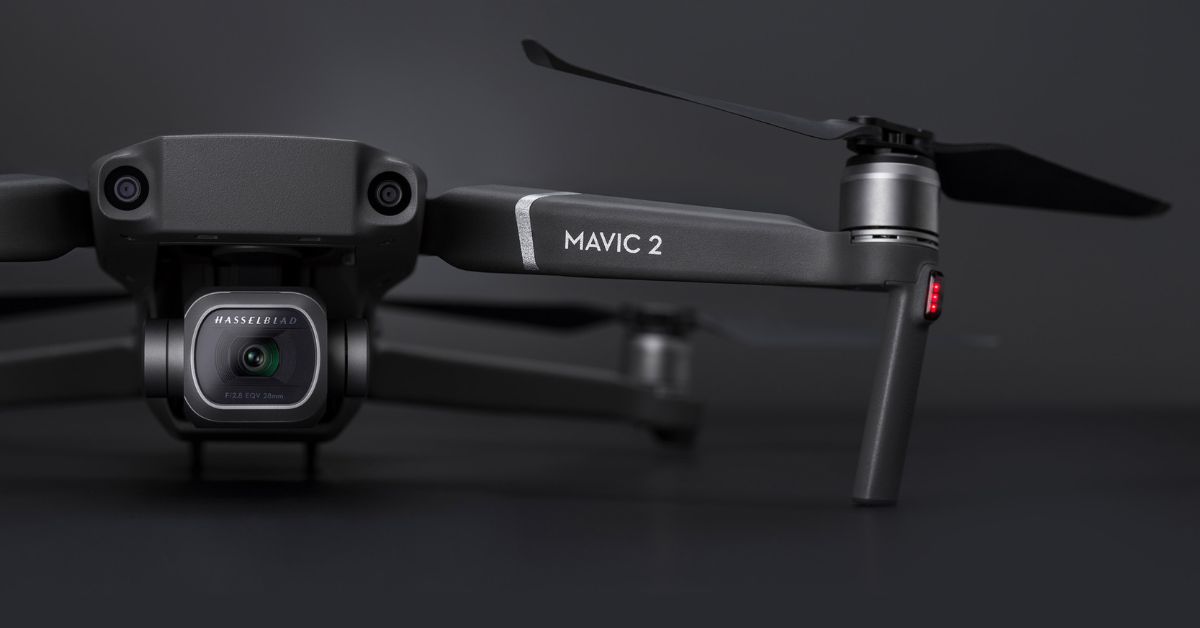
The DJI Mavic 2 Pro is one of the most popular drones for professional photography, thanks to its advanced camera system and impressive flight performance. The drone features a 20-megapixel Hasselblad camera with a 1-inch CMOS sensor, which delivers stunning, high-resolution images and videos. The drone also offers 3-axis gimbal stabilization and advanced obstacle avoidance features, making it a reliable and stable choice for aerial photography. The Mavic 2 Pro has a flight time of up to 31 minutes and can reach speeds of up to 45 mph.
Pros:
High-quality camera: The Mavic 2 Pro features a Hasselblad camera with a 1-inch CMOS sensor, which produces stunning, high-resolution images and videos with excellent colour accuracy and dynamic range.
Stable flight performance: The drone features advanced stabilization features like a 3-axis gimbal and electronic image stabilization, which help ensure that your footage comes out smooth and clear.
Advanced obstacle avoidance: The Mavic 2 Pro comes equipped with obstacle avoidance sensors on all sides, allowing it to detect and avoid obstacles while flying, reducing the risk of crashes and damage to the drone.
Cons:
High cost: The Mavic 2 Pro is a high-end drone with advanced features, and its price tag reflects that. It may be too expensive for some users, particularly those who are just starting out with aerial photography.
Limited portability: While the Mavic 2 Pro is relatively compact for a high-end drone, it may still be too bulky for some users who need maximum portability and ease of transport.
Short battery life: The Mavic 2 Pro’s battery life is around 31 minutes, which may not be enough for some users who need to capture extended footage or cover a large area. Users may need to invest in additional batteries to extend their flight time.
Autel Robotics Evo II Pro

Another strong contender for professional photographers is the Autel Robotics Evo II Pro. This drone features a 6K camera with a 1-inch sensor, which allows for incredible detail and colour accuracy. The Evo II Pro also offers a 3-axis gimbal and advanced obstacle avoidance features, making it a reliable and safe choice for aerial photography. The drone has a flight time of up to 40 minutes and can fly at speeds of up to 45 mph.
Pros:
High-quality camera: The Evo II Pro features a 6K camera with a 1-inch sensor, which is capable of capturing stunning, high-resolution photos and videos with excellent detail and colour accuracy.
Long battery life: The drone has a flight time of up to 40 minutes, which is longer than many other drones on the market. This makes it an ideal choice for photographers who need to cover a large area or capture extended footage.
Wide range of flight modes: The Evo II Pro offers a range of flight modes, including Orbit, Waypoint, and Follow Me, which allow you to capture footage from different angles and perspectives.
Cons:
Large and heavy: The Evo II Pro is a relatively large and heavy drone, which may make it difficult to transport and manoeuvre in certain situations.
No obstacle avoidance on sides and bottom: While the drone does feature obstacle avoidance sensors on the front and top, it lacks sensors on the sides and bottom, which could potentially lead to collisions and crashes.
Expensive: The Evo II Pro is a high-end drone with advanced features, and its price tag may be too steep for some users who are on a budget or just starting out with aerial photography.
Parrot Anafi USA
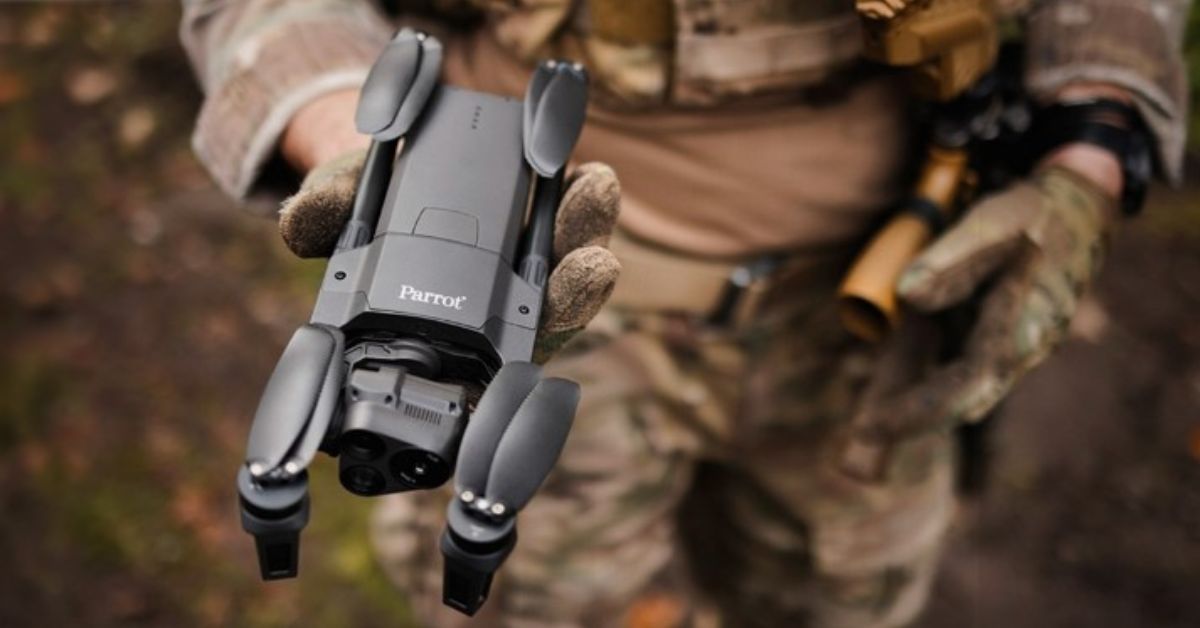
The Parrot Anafi USA is a unique drone that offers a 180-degree tilt gimbal, allowing you to capture shots from unique angles. The drone features a 21-megapixel camera with 4K HDR video capabilities, as well as 3-axis stabilization and obstacle avoidance sensors. The Anafi USA is also highly portable, folding up to a compact size for easy transportation. The drone has a flight time of up to 32 minutes and can reach speeds of up to 33 mph.
Pros:
Lightweight and portable: The Anafi USA is one of the most compact and lightweight drones on the market, making it easy to transport and manoeuvre in tight spaces.
32x digital zoom: The drone features a 21-megapixel camera with a 32x digital zoom, which allows you to capture clear and detailed footage from a distance.
Thermal imaging capabilities: The Anafi USA features a FLIR Boson thermal camera, which makes it an ideal choice for professionals who need to conduct inspections or search and rescue missions.
Cons:
Limited flight time: The Anafi USA has a flight time of up to 32 minutes, which is shorter than some other high-end drones on the market.
Limited obstacle avoidance features: While the drone does feature obstacle avoidance sensors, they only work on the front and bottom of the drone. This means that users need to be careful when flying in tight or crowded spaces.
Limited range: The Anafi USA has a range of up to 4.3 miles, which may be too limited for some users who need to cover a larger area or fly long distances.
Other Top Photography Drones to Consider
In addition to the drones mentioned above, there are several other models that are popular among professional photographers. Here are a few worth considering:
DJI Phantom 4 Pro V2.0
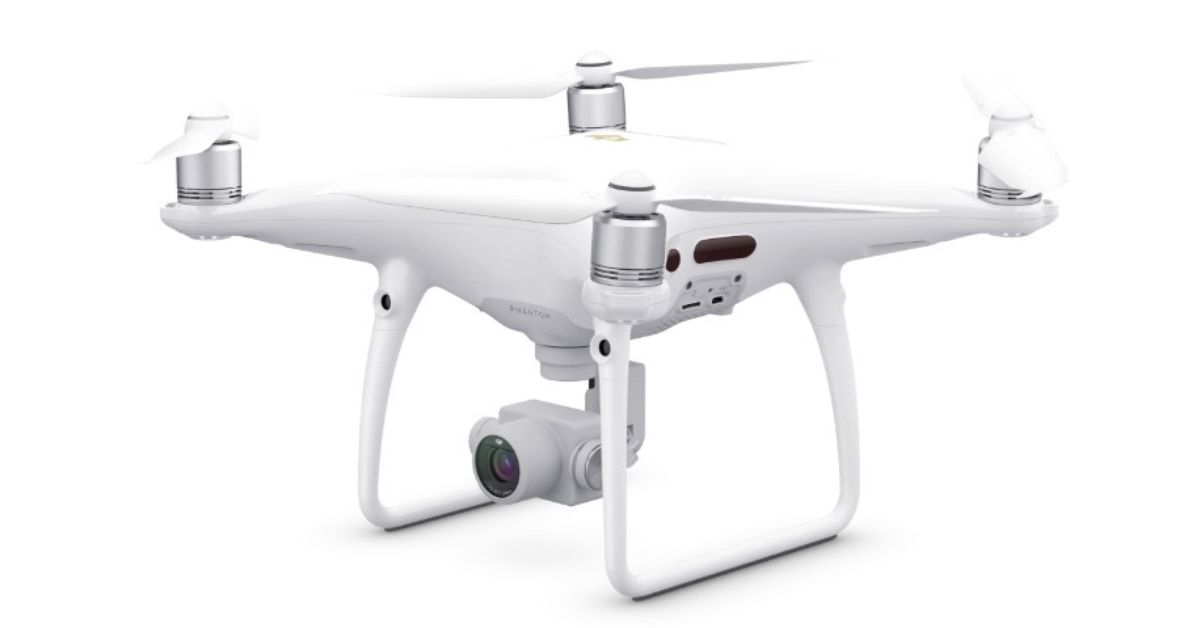
This drone features a 20-megapixel camera with a 1-inch sensor and 4K video capabilities, as well as advanced obstacle avoidance features and a flight time of up to 28 minutes.
Pros:
High-quality camera: The Phantom 4 Pro V2.0 features a 20-megapixel camera with a 1-inch CMOS sensor, which produces stunning, high-resolution images and videos with excellent colour accuracy and dynamic range.
Advanced obstacle avoidance: The drone comes equipped with obstacle avoidance sensors on all sides, allowing it to detect and avoid obstacles while flying, reducing the risk of crashes and damage to the drone.
Long range and flight time: The drone has a range of up to 7 km and a flight time of up to 30 minutes, making it an ideal choice for professionals who need to cover large areas or capture extended footage.
Cons:
Bulky and heavy: The Phantom 4 Pro V2.0 is a relatively large and heavy drone, which may make it difficult to transport and manoeuvre in certain situations.
Expensive: The Phantom 4 Pro V2.0 is a high-end drone with advanced features, and its price tag may be too steep for some users who are on a budget or just starting out with aerial photography.
No thermal imaging: The drone does not come with thermal imaging capabilities, which may be a disadvantage for users who need to conduct inspections or search and rescue missions that require thermal imaging.
Skydio 2
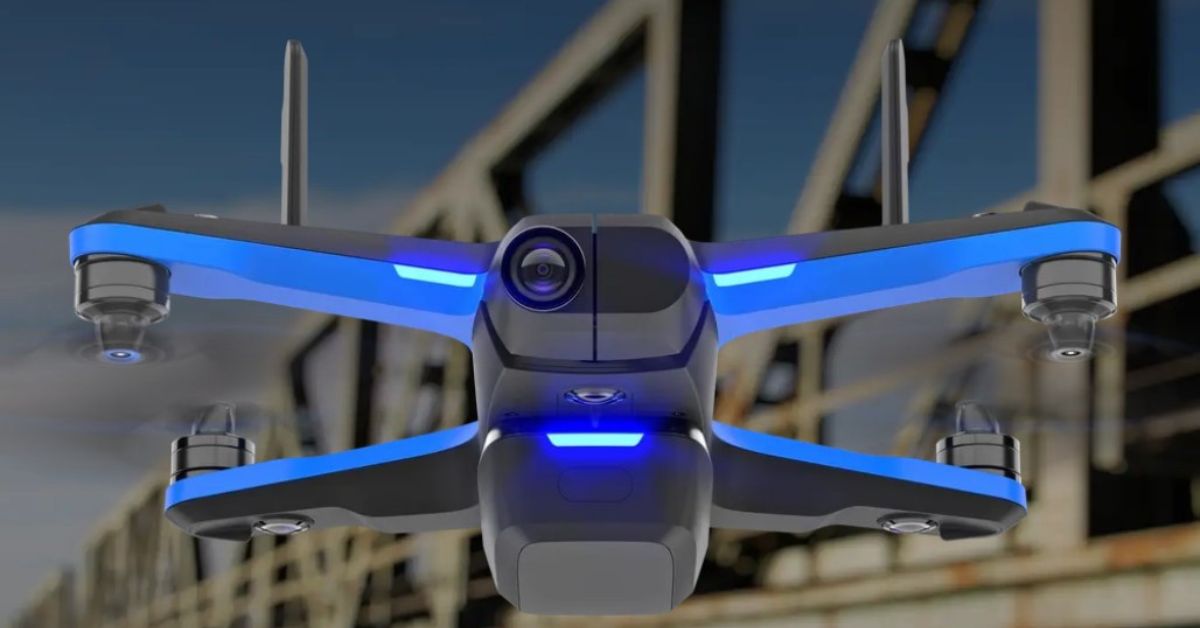
This drone uses artificial intelligence to navigate and avoid obstacles, making it a great choice for capturing action shots. The Skydio 2 also features a 12-megapixel camera with 4K video capabilities and a flight time of up to 23 minutes.
Pros:
Advanced autonomous flight capabilities: The Skydio 2 features advanced autonomous flight capabilities, including obstacle avoidance and subject tracking, which allow it to fly and capture footage without the need for human intervention.
Compact and portable: The drone is lightweight and compact, making it easy to transport and manoeuvre in tight spaces.
High-quality camera: The drone features a 12-megapixel camera with 4K video recording capabilities, which produces stunning, high-resolution footage with excellent detail and colour accuracy.
Cons:
Limited flight time: The Skydio 2 has a flight time of up to 23 minutes, which is shorter than some other high-end drones on the market.
Limited range: The drone has a range of up to 3.5 km, which may be too limited for some users who need to cover a larger area or fly long distances.
Expensive: The Skydio 2 is a high-end drone with advanced features, and its price tag may be too steep for some users who are on a budget or just starting out with aerial photography.
No obstacle avoidance sensors on top: The drone has obstacle avoidance sensors only on the front, back and sides, but not on top. This means that users need to be careful when flying in tight or crowded spaces, especially when the drone is descending.
Yuneec Typhoon H Pro
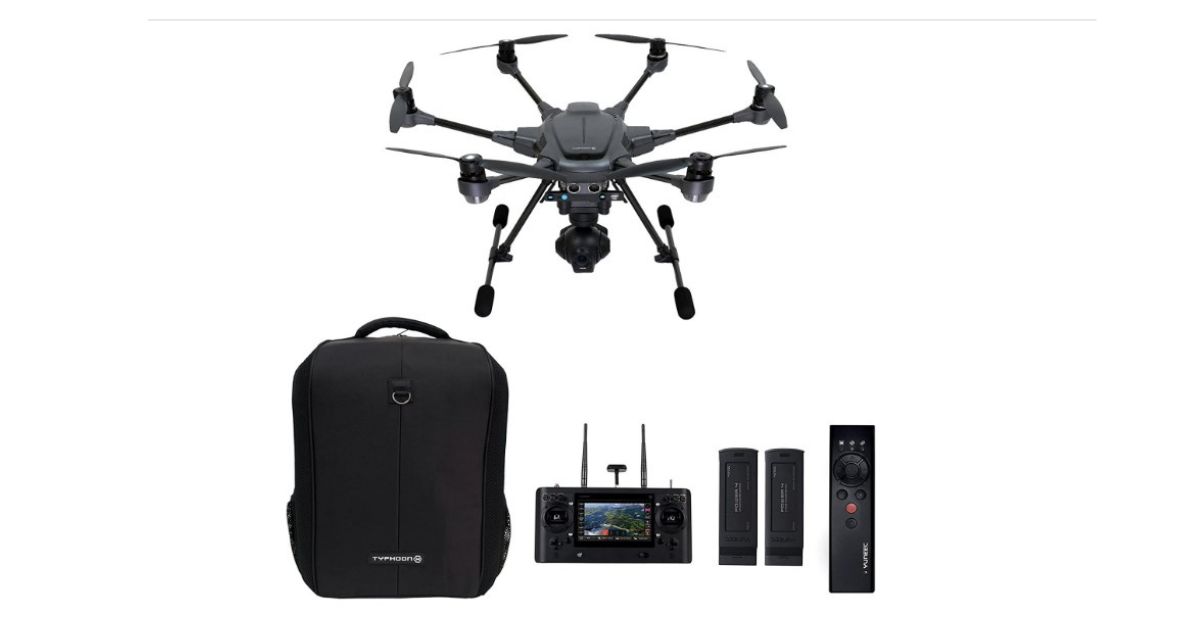
This hexacopter drone features a 20-megapixel camera with 4K video capabilities, as well as retractable landing gear for unobstructed 360-degree camera views. The Typhoon H Pro also offers advanced obstacle avoidance features and a flight time of up to 25 minutes.
Pros:
Six-rotor design: The Typhoon H Pro features a six-rotor design, which provides added stability and allows the drone to fly smoothly even in windy conditions.
Retractable landing gear: The drone comes equipped with retractable landing gear, which allows the camera to capture unobstructed 360-degree footage.
Interchangeable camera: The drone’s camera is interchangeable, which means that users can swap out the camera for a different model if they need a specific feature or capability.
Cons:
Limited range: The Typhoon H Pro has a range of up to 1.6 km, which may be too limited for some users who need to cover a larger area or fly long distances.
Limited obstacle avoidance: The drone features obstacle avoidance sensors only on the front and bottom of the drone, which means that users need to be careful when flying in tight or crowded spaces.
Bulky and heavy: The Typhoon H Pro is a relatively large and heavy drone, which may make it difficult to transport and manoeuvre in certain situations.
Expensive: The drone is a high-end model with advanced features, and its price tag may be too steep for some users who are on a budget or just starting out with aerial photography.
Conclusion
Choosing the right drone for professional photography can be a daunting task, but by considering factors like camera quality, stability, flight time, obstacle avoidance, and portability, you can narrow down your options and find the best drone for your needs. The DJI Mavic 2 Pro, Autel Robotics Evo II Pro, and Parrot Anafi USA are all excellent choices for photographers, but there are many other models worth considering as well. By doing your research and weighing the pros and cons of each drone, you can find the perfect tool for capturing stunning aerial photos and videos.

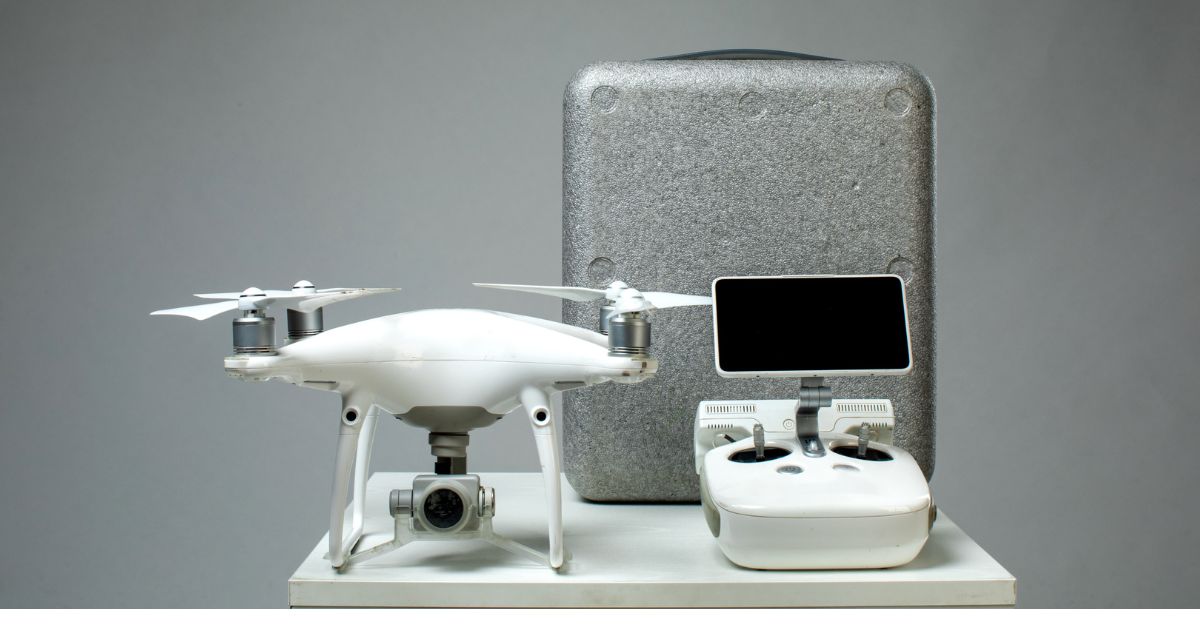
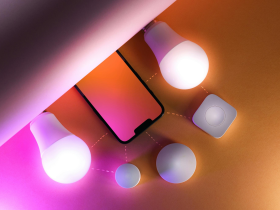
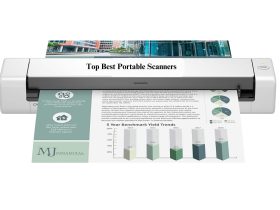
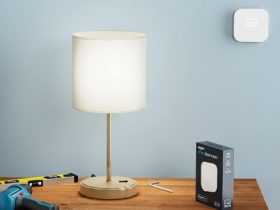

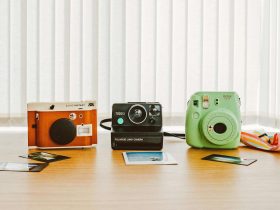
Leave a Reply